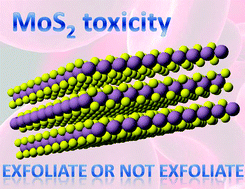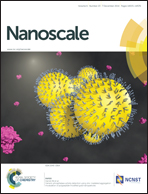MoS2 exhibits stronger toxicity with increased exfoliation
Abstract
MoS2 belong to a class of inorganic 2D nanomaterials known as transition metal dichalcogenides (TMDs) which have recently attracted a renewed and growing interest due to their interesting electronic and catalytic properties when scaled down to single or few layer sheets. Although exfoliated MoS2 nanosheets have been proposed for numerous energy-related and biosensing applications, little is known about the toxicological impacts of using MoS2 nanosheets. Here, we report about the in vitro toxicity of MoS2 nanosheets that have been chemically exfoliated with different lithium intercalating agents and compared their respective cytotoxic influence. Methyllithium (Me-Li), n-butyllithium (n-Bu-Li) and tert-butyllithium (t-Bu-Li) were used for the exfoliation of bulk MoS2 and we found the t-Bu-Li and n-Bu-Li exfoliated MoS2 nanosheets to be more cytotoxic than MoS2 exfoliated by Me-Li. t-Bu-Li and n-Bu-Li provide more efficient exfoliation over Me-Li, and we establish that the extent of exfoliation that MoS2 undergo is a factor influencing their toxicity. Specifically, the more exfoliated the MoS2 nanosheets, the stronger its cytotoxic influence, which may be due to an increase in surface area and active edge sites. The potential toxicity of these MoS2 nanosheets should be taken into account before their employment in real world applications and we have shown the effect the amount of exfoliation can have on the toxicity of MoS2 nanosheets, representing the first step towards a better understanding of their toxicological properties.


 Please wait while we load your content...
Please wait while we load your content...